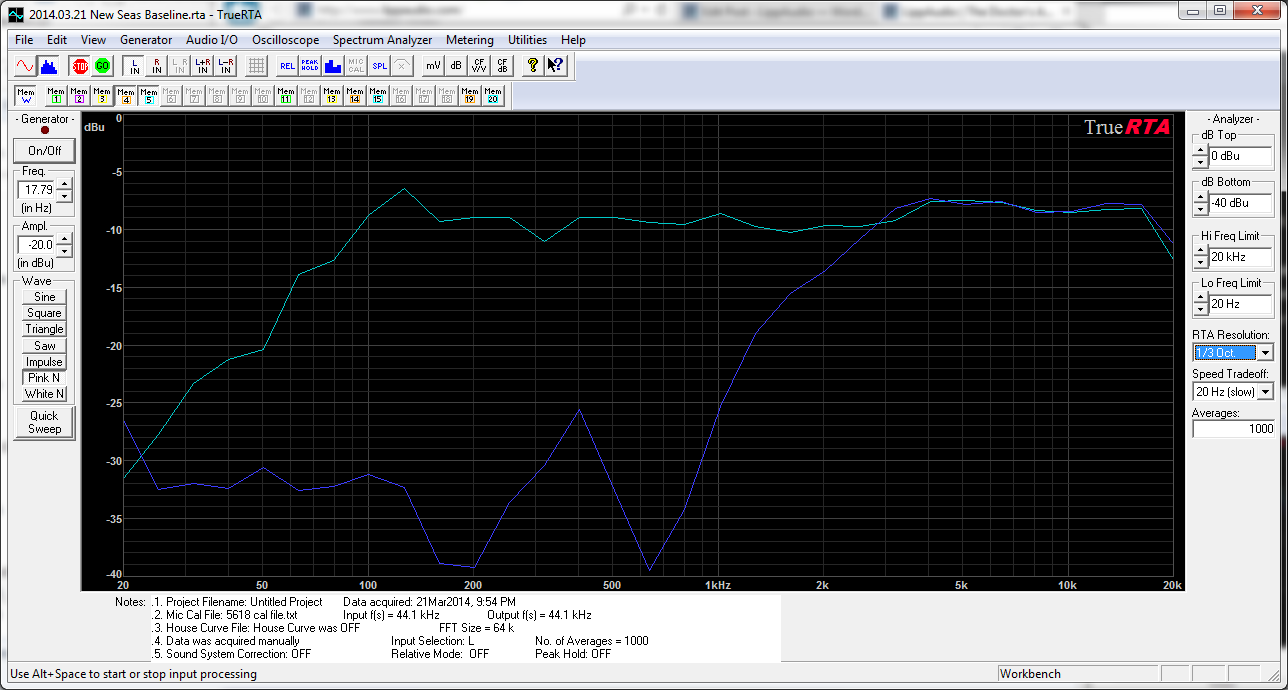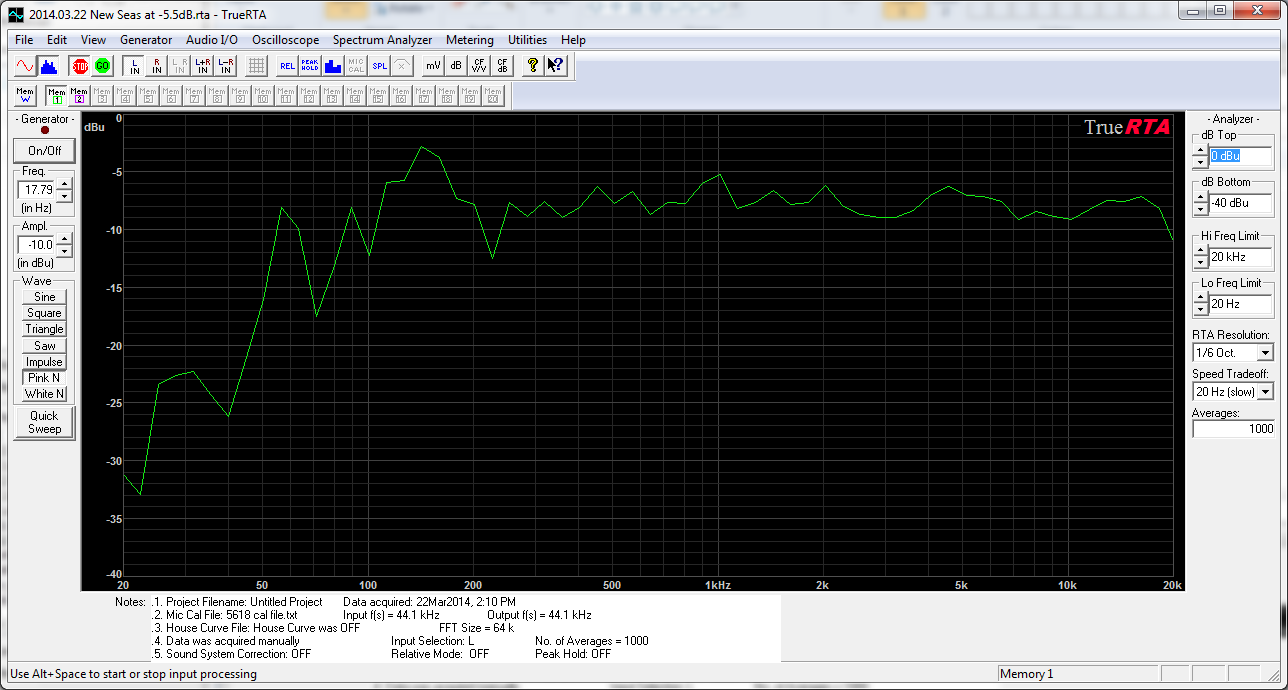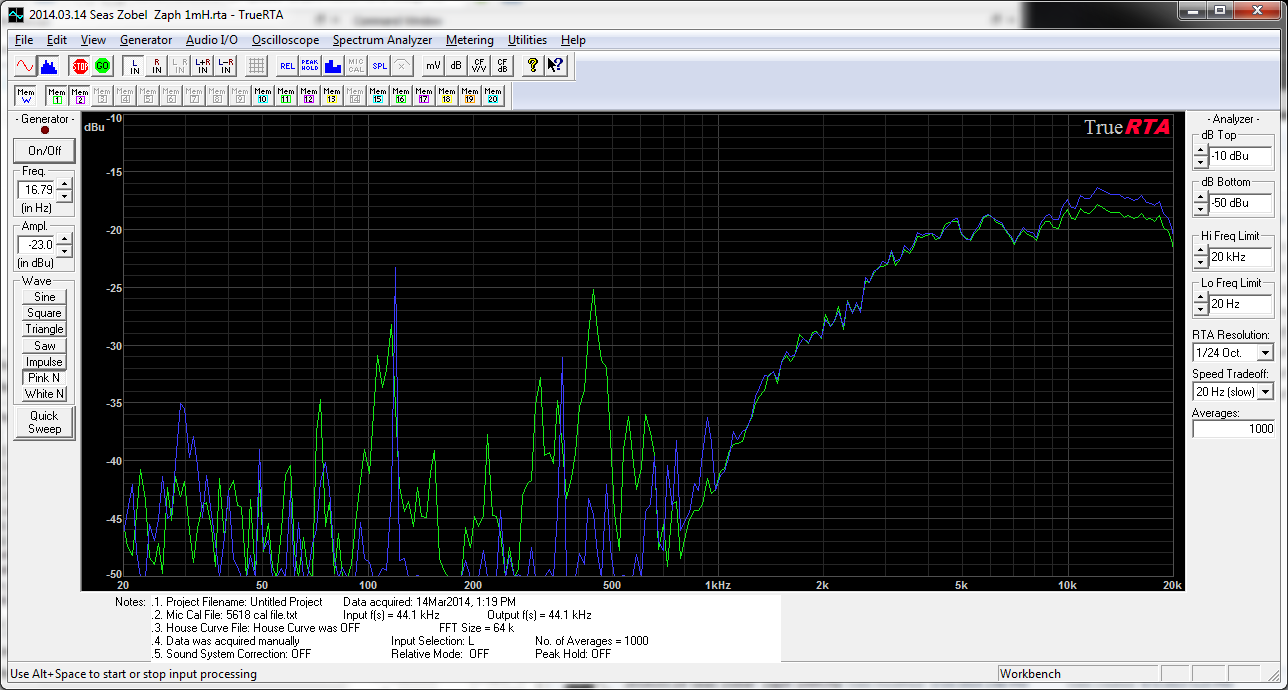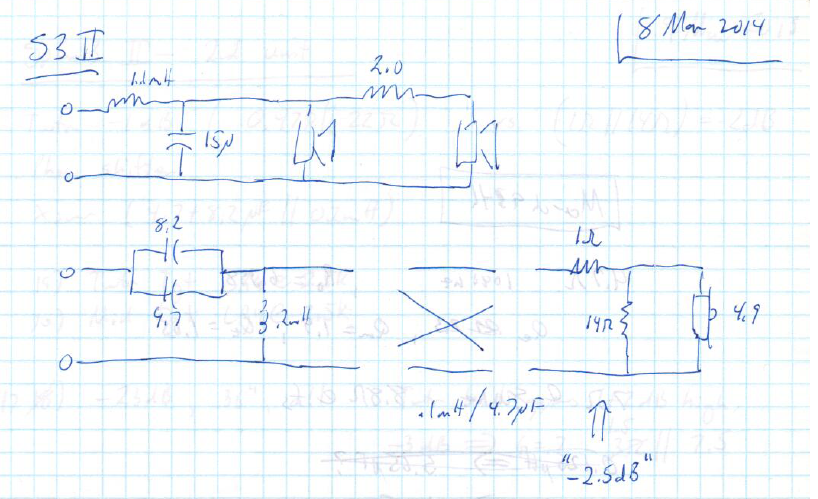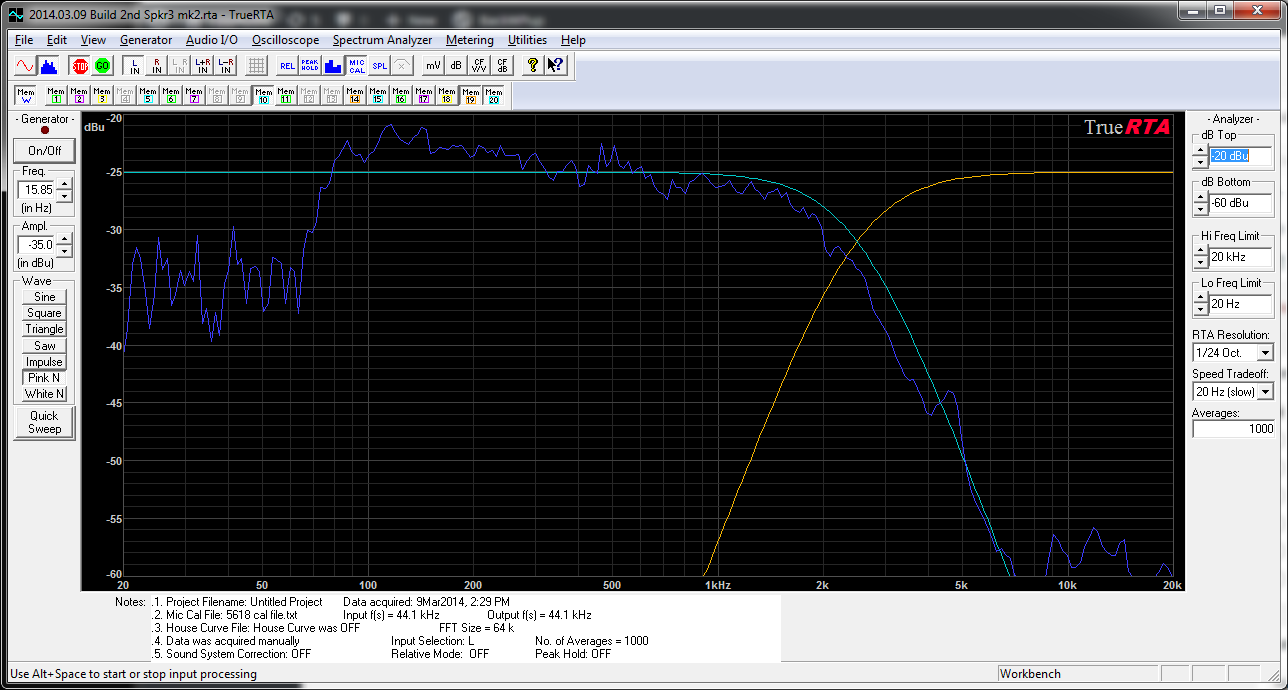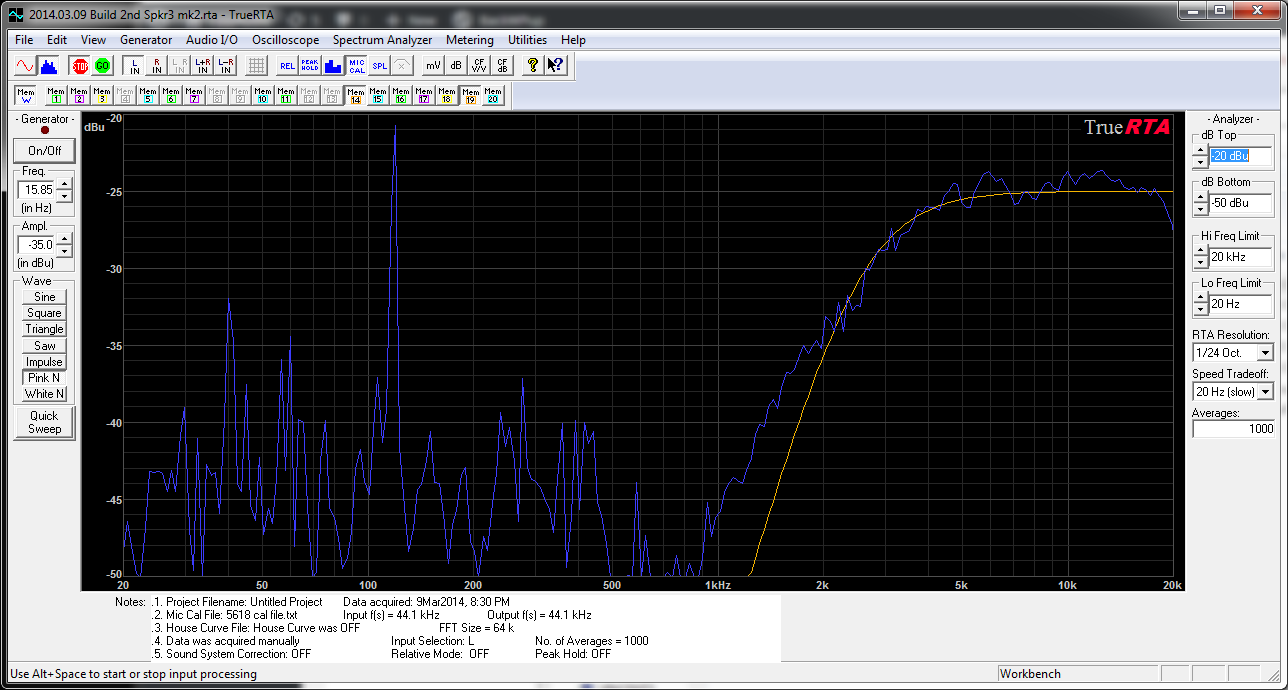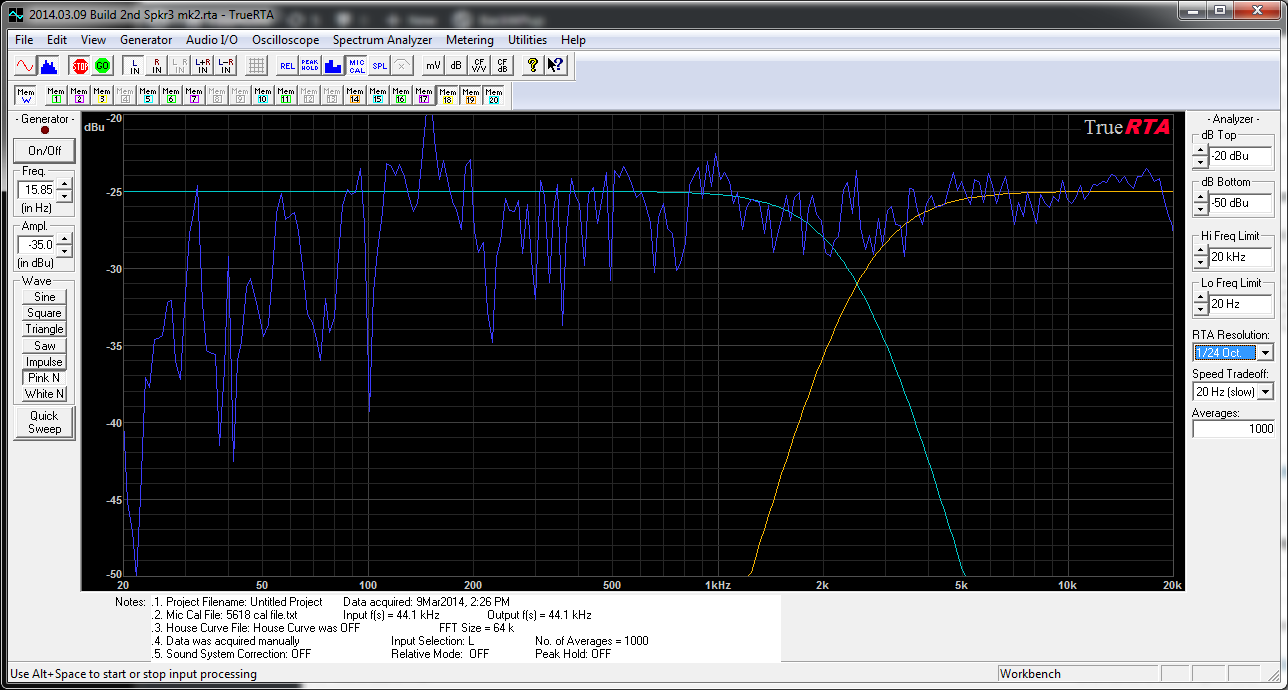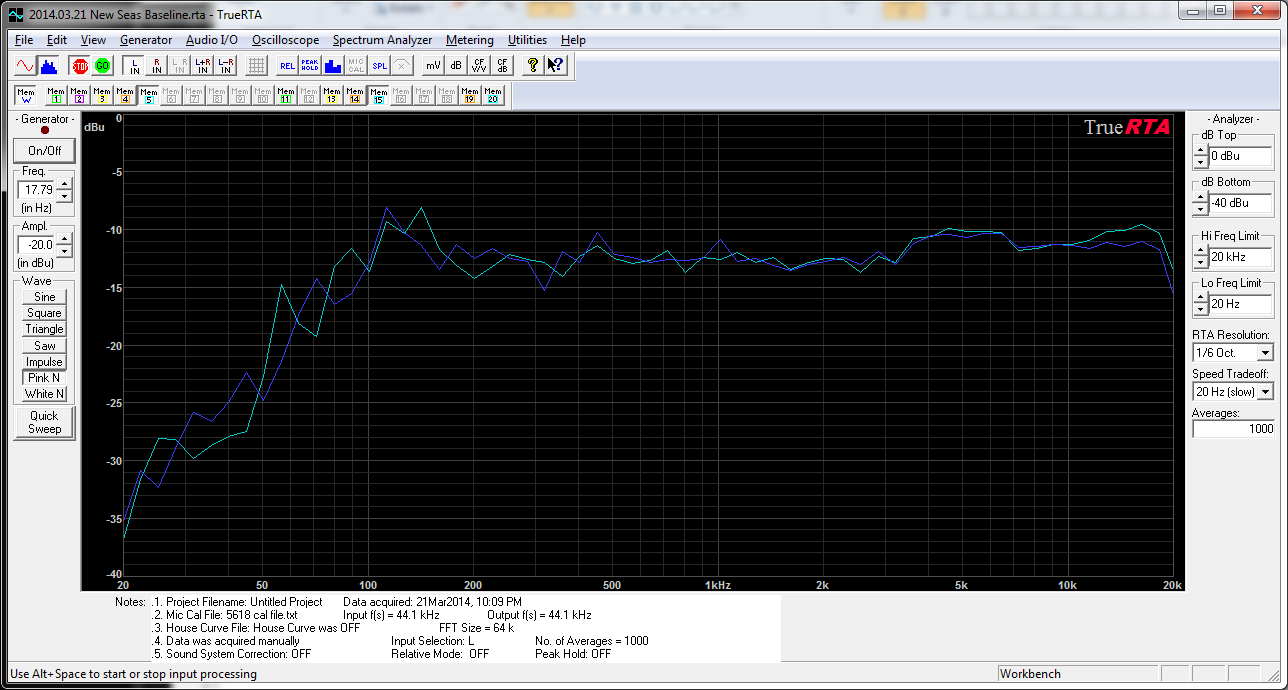
After further listening and testing, the tweeter appear to be just a little too bright. Above is a 1/6 octave smoothed measurement at 18″ (this distance compares well to measurements at 36″, only with better signal-to-noise). Both left and right speakers are measured. Below is the left speaker and the tweeter, smoothed to 1/3 octave. It looks like about 2 dB more tweeter attenuation should even things out, which brings the total tweeter attenuation to -5.5 dB.
The final result, smoothed to 1/6 octave:
